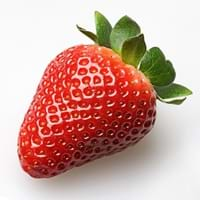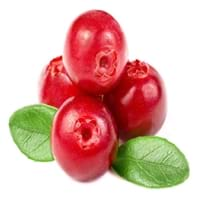Health Benefits
Anti depressant, Asthma treatment, Cancer prevention, Heart care, Improves stomach health, Increases metabolic rate, Prevents constipation
Cancer prevention, Heart care, Kidney stone treatment, Scurvy treatment, Ulcer prevention
General Benefits
Anti-inflammatory properties, Boosts immune system, Controls blood pressure, Eye care, Maintains healthy cholesterol level, Strengthens bones
Anti-inflammatory properties, Boosts immune system, Digestive aid, Fights against infections, Strengthens bones
Skin Benefits
Anti-aging benefits, Brightens and lightens complexion, Skin cleansing, Treatment of acne, Treatment of skin diseases
Anti-aging benefits, Reduces wrinkles, Skin rejuvenation, Treatment of acne
Hair Benefits
Promotes longer and healthier hair, Shiny hair, Treatment of dandruff
Promotes longer and healthier hair, Protects hair, Treatment of dandruff
Allergy Symptoms
Chest pains, Eczema, Hives inside the cheeks, Itching, Skin rash, Swelling, Watery eyes
Anaphylaxis, Breathing difficulty, Itching, Skin rash, Swelling of mouth, tongue or lips
Side Effects
Allergic reaction
Allergic reaction, Diarrhoea, Nausea, Stomach pain, Vomiting
Best Time to Eat
As a snack in the late afternoon, Don't consume at night and before bed, Don't eat after meal, Morning time (before lunch), Strictly avoid empty stomach
Any time except an hour after meal, Don't consume at night and before bed
Vitamin B5 (Pantothenic Acid)
Vitamin C (Ascorbic Acid)
Vitamin K (Phyllochinone)
Phytosterol
Not Available
Calories in Fresh Fruit with Peel
Calories in Fresh Fruit without Peel
Not Available
Not Available
Calories in Juice
Not Available
Calories in Jam
Not Available
Calories in Pie
Not Available
Season
Spring, Summer
Autumn
Varieties
Allstar, Annapolis, Cavendish, Chandler, Earliglow, Flavorfest, Honeoye, Jewel, Northeaster, San Andreas, Seascape, Tribute and Tristar
Early Black, Howes, Ben Lear and Stevens
Taste
Sour-Sweet
Bitter, Tart
Origin
Europe
North America
Soil Type
Loam
Clay, Sandy, Well-drained
Climatic Conditions
Cold
Warm
Facts about
- Strawberry is the only fruit with seeds on its covering.
- Belgium has a museum dedicated to strawberries.
- Americans eat almost 3.4 pounds of fresh strawberries each year.
- They are believed to be an aphrodisiac.
- Europeans thought the cranberry blossom looked like the head of a sandhill crane, hence the name Cranberry.
- They are also known as bounce berries as they bounce when they ripe.
- Cranberries do not grow in water.
Top Producer
United States of America
United States of America
Other Countries
Egypt, Mexico, Russia, Spain, Turkey
Azerbaijan, Belarus, Bulgaria, Canada, Latvia, Macedonia, NA, Romania, Tunisia, Ukraine
Top Importer
Canada
Europe
Top Exporter
United States of America
United States of America
Botanical Name
Fragaria Ananassa
Vaccinium Macrocarpon
Synonym
Not Available
Oxycoccus macrocarpus
Subkingdom
Tracheobionta
Tracheobionta
Division
Magnoliophyta
Magnoliophyta
Class
Magnoliopsida
Magnoliopsida
Subclass
Rosidae
Dillenhidae
Family
Rosaceae
Ericaceae
Species
F. ananassa
Vaccinium macrocarpon
Difference Between Strawberry and Cranberry
We might think that Strawberry and Cranberry are similar with respect to nutritional value and health benefits. But the nutrient content of both fruits is different. Strawberry and Cranberry Facts such as their taste, shape, color, and size are also distinct. The difference between Strawberry and Cranberry is explained here.
The amount of calories in 100 gm of fresh Strawberry and Cranberry with peel is 33.00 kcal and 46.00 kcal and the amount of calories without peel is Not Available and Not Available respectively. Thus, Strawberry and Cranberry belong to Low Calorie Fruits and Low Calorie Fruits category.These fruits might or might not differ with respect to their scientific classification. The order of Strawberry and Cranberry is Rosales and Ericales respectively. Strawberry belongs to Rosaceae family and Cranberry belongs to Ericaceae family. Strawberry belongs to Fragaria genus of F. ananassa species and Cranberry belongs to Vaccinium genus of Vaccinium macrocarpon species. Beings plants, both fruits belong to Plantae Kingdom.









